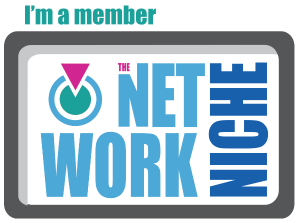 You know the feeling…You’re at your desk, staring at the same screen for over an hour, desperately trying to jumble a coherent string of words together. You’re browsing social media, looking at all the people with these amazing careers who are changing the world. You’re listening to the umpteenth podcast of why you should make an impact in your work, and yet, you’re still stuck trying to put together the first sentence of that memo for the department meeting in an hour…
You know the feeling…You’re at your desk, staring at the same screen for over an hour, desperately trying to jumble a coherent string of words together. You’re browsing social media, looking at all the people with these amazing careers who are changing the world. You’re listening to the umpteenth podcast of why you should make an impact in your work, and yet, you’re still stuck trying to put together the first sentence of that memo for the department meeting in an hour…
Is it you, the economy, or has summer robbed you of whatever fragile motivation you had left? After all, you have a job, right? And you should be thankful for it, right? Yet, you can’t help but feel this unsettling thing in the pit of your stomach, that you’re not quite where you should be.
If that’s you and you’re wondering where your career really stands, here are 7 signs you’ve hit a professional slump:
You’ve been having the same roles and responsibilities for years.
Yes, certain jobs and functions are pretty static. However, if you haven’t noticed the slightest change in your job duties, or worse, your responsibilities have actually declined, it’s time to consider the big career “S” (as in “career slump”).
What to do: Ask your manager why your roles and responsibilities have remained flat (or even declined) over time. Review your past performance reviews for indicators of areas of improvement, and be willing to have an honest conversation with your boss (and yourself).
You’ve hopped from job to job with the same title and responsibilities.
If your resume is starting to look like an obstacle course with many different employers and pretty much the same job responsibilities, you may be in the slump. Take a look at your work history over the past 3 to 5 years, and if your salary hasn’t improved and your job duties have remained the same, time to consider getting out of this career rut.
What to do: Take some time to go over your work history, and ask yourself what has prompted these career changes. Identify your weaknesses and areas of improvement, and start working on them right where you are. If feasible, share your concerns with your current manager and devise a plan to get to the next level. You may also want to consider if you’re in the right career (use this app to identify your career match).
Employees who came in after you were promoted faster than you.
This one is going to sting, but you’ve got to keep it real. If John was hired a few months after you, and got the promotion you were expecting, it may be a stroke of luck (or interesting office politics) for him. But if a few people hired after you nabbed their promotions and you’re still waiting in line for a professional miracle, it may be time to stop and think.
What to do: Bring it up with your manager during a performance review or even a routine 1-on-1. This is not a matter of comparing yourself with other employees but rather of assessing where you stand in your group or department. Have the courage to ask what’s making you lag behind and what you can do to improve.
You’re not learning anything.
If the last thing you learnt about your field or industry was over a year ago, it’s time to take a breather. A thriving career is one in which you’re constantly learning, evolving and growing. If you’re not exposed to any new material, responsibility or topic, then you’re lagging behind.
What to do: Make a quick inventory of any new skills or information you may have acquired in the past year. If the list is nowhere close to being satisfying, first ask yourself if you’re not putting enough effort to learn. Then have a conversation with your management to identify areas in which you can learn and acquire new skills over the next year.
Communication is coming to a standstill.
If your managers and co-workers are limiting their communication with you, it’s time to ask yourself some serious questions. Are topics and ideas being discussed around you that you have no clue about? Does it seem like important talks happen behind closed doors and you’re not part of it? That gut feeling is right, you’ve hit a serious slump’
What to do:It’s important to address miscommunications or lags in communication as soon as they start occurring. Ask your team and managers why you’re not included in key conversations. Even if you’re not getting honest answers, assess the situation and evaluate whether it’s worthwhile for you to stick it out, and what you can do improve it.
Do you recognize these signs? What would you add to this list?
To Your Success,
The Corporate Sis.







